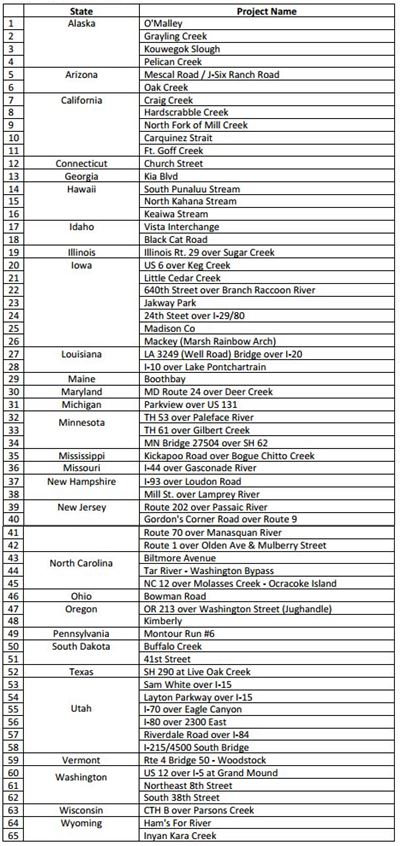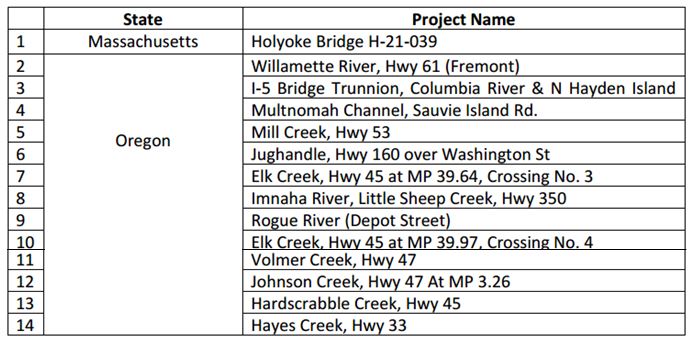1. State-of-the-Art literature review
During this task a comprehensive literature review was conducted to identify the current ABC decision making tools, the decision factors taken into account, and the way these factors are accounted for. Furthermore, a literature review identifying the different components of indirect & agency cost was completed. From this information, the limitations of the current tools and the requirements of the new tools were identified. Finally, a comprehensive review of the current user cost estimation tools was conducted to assess the strengths and weaknesses of each tool and determine their suitability to be used in the context of this study.
2. Construction Cost Data collection
In this task, data related to the final construction cost and duration of several nationwide completed ABC projects as well as the characteristics of these projects were collected. In total, data from 65 projects from 29 different states were collected as shown in the table below.
Table 1: Construction Cost Data

3. Indirect Cost Data Collection
In this task, data about the magnitude and types of different components of the indirect & agency costs are being collected and at this stage data from 13 projects from ODOT and one project from MassDOT were compiled as shown in the table below.
Table 2: Indirect Cost Data

Task 4. Data analysis
i. Construction Cost: Four main factors were identified as the main factors influencing the project construction cost; these factors are: the project location, AADT, type of bridge structure, and number of spans. To analyze the data, the collected data were normalized for time and location using the RS Means indices and a statistical classification model was used to create a model for cost estimation.
ii. Indirect Cost: A preliminary analysis of the indirect cost data collected up to this stage was conducted to understand the different characteristics of these data.
Task 5. Cost Estimation
Three existing sketch planning tools with different levels of details (Q-DAT, Real Cost and Quickzone) have already been integrated with the reliability estimation methods of the SHRP 2 L03, L07 and C11 projects. The estimation from these tools is being validated based on real-world construction zone data.
Task 6. Case Studies
A meeting with MassDOT was conducted in late April from which data about the candidate project for the case study are being collected.

